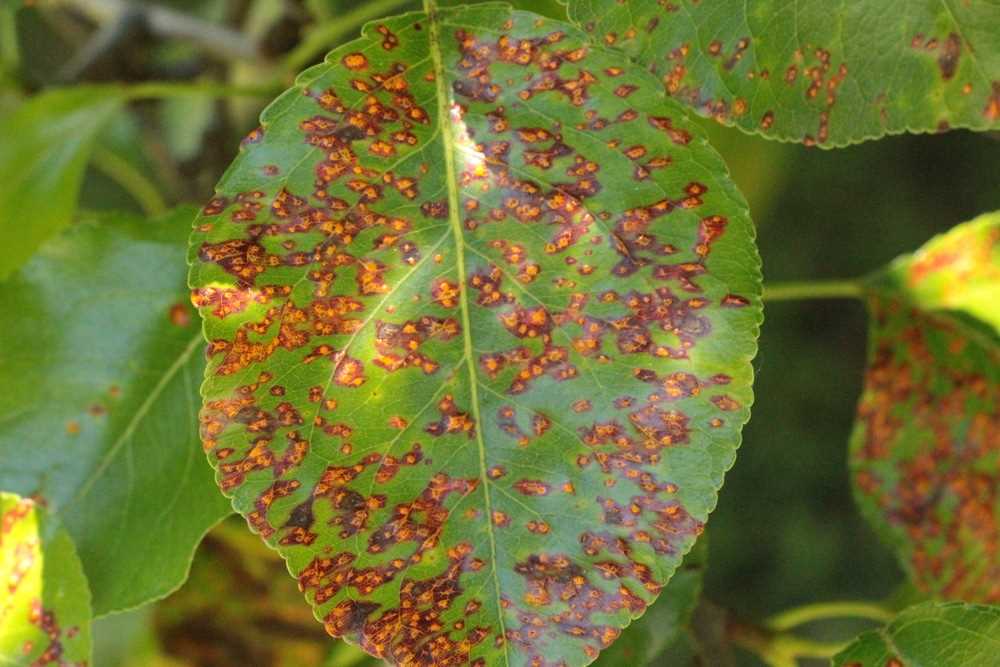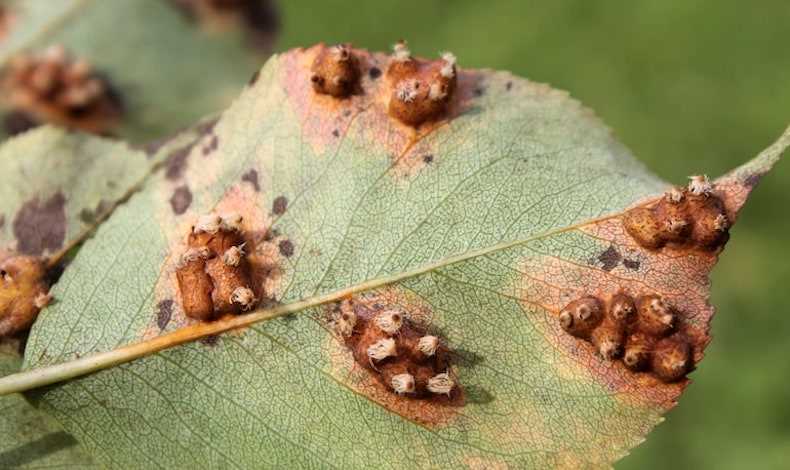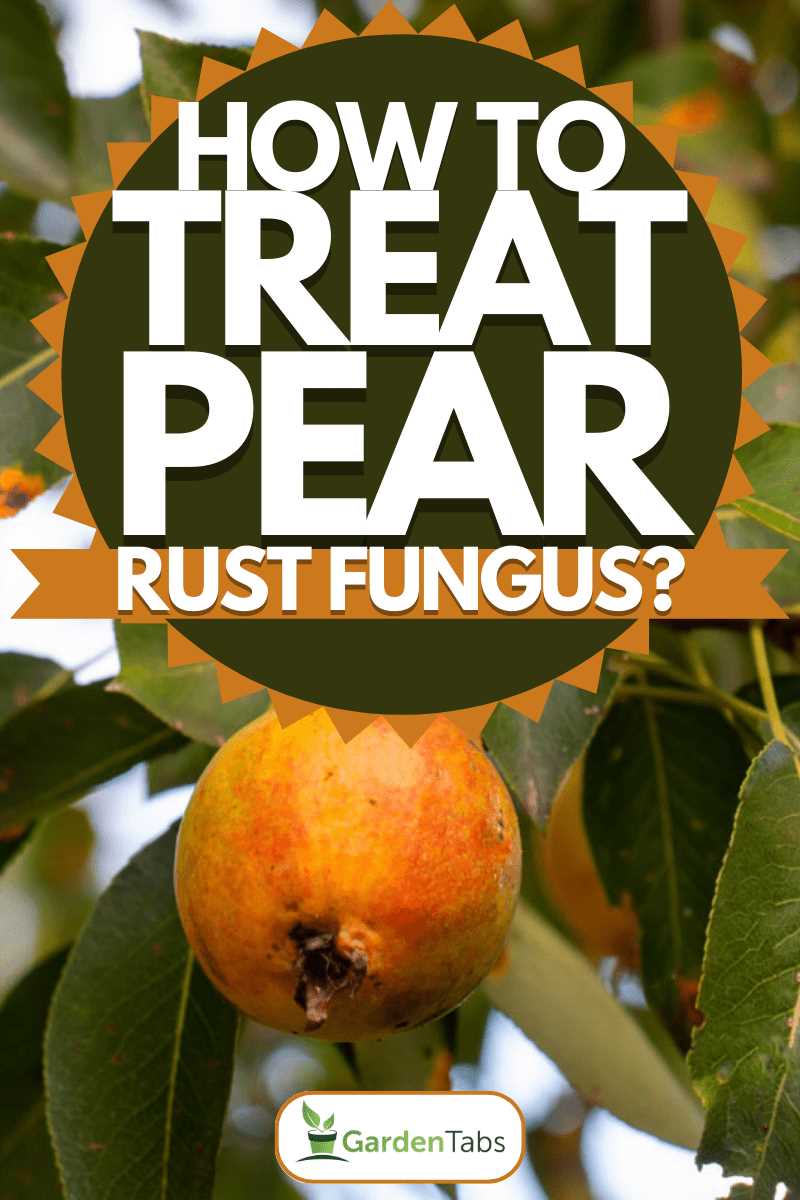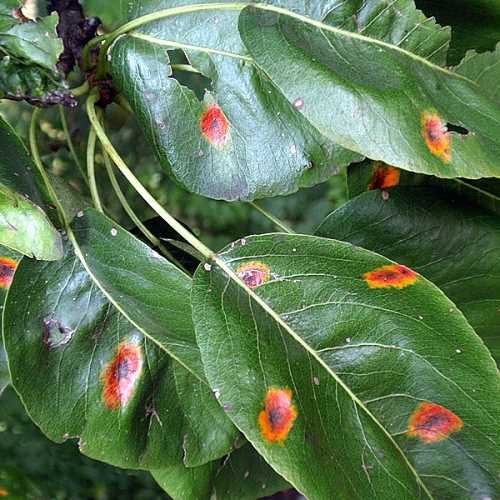- Understanding Pear Rust: Causes and Symptoms
- Causes of Pear Rust
- Symptoms of Pear Rust
- Proper Way to Identify Pear Rust on Your Trees
- Step 1: Know the Symptoms
- Step 2: Observe the Timing
- Step 3: Check the Surroundings
- Step 4: Confirm with Additional Resources
- Step 5: Take Action
- Essential Tools for Treating Pear Rust
- 1. Pruning Shears
- 2. Fungicide Spray
- 3. Protective Clothing
- 4. Watering Can or Sprayer
- 5. Ladder
- 6. Clean-Up Supplies
- 7. Garden Gloves
- Best Methods for Preventing Pear Rust
- 1. Select Resistant Pear Varieties
- 2. Maintain Good Air Circulation
- 3. Remove Infected Leaves and Fruits
- 4. Apply Fungicides
- 5. Practice Good Garden Hygiene
- 6. Monitor Weather Conditions
- Organic Treatments for Pear Rust: Effective and Environmentally Friendly Solutions
- 1. Prune Infected Branches
- 2. Improve Air Circulation
- 3. Apply Organic Fungicides
- 4. Remove Fallen Leaves and Debris
- 5. Practice Proper Irrigation
- 6. Plant Resistant Varieties
- Chemical Treatments for Pear Rust: When and How to Use Them
- 1. Fungicides
- 2. Copper-Based Products
- 3. Other Chemical Treatments
- Common Mistakes to Avoid When Treating Pear Rust
- Long-Term Management of Pear Rust: Strategies for Ensuring Healthy Trees
- 1. Proper Tree Care
- 2. Plant Disease-Resistant Varieties
- 3. Proper Site Selection
- 4. Fungicide Treatments
- 5. Regular Monitoring and Early Detection
- 6. Proper Disposal of Infected Material
- 7. Collaboration with Local Experts
- Question-answer:
- What is pear rust and how does it affect pear trees?
- How can I prevent pear rust?
- What are some natural remedies to treat pear rust?
- Are there any chemical treatments for pear rust?
- Can pear rust be fatal to pear trees?
- What should I avoid when treating pear rust?
Pear rust is a common fungal disease that affects pear trees and can greatly reduce fruit production. It is caused by the fungus Gymnosporangium sabinae and is characterized by orange spore masses that form on the leaves, fruit, and twigs of infected trees. If left untreated, pear rust can weaken and kill the tree. Fortunately, there are several effective methods for treating pear rust and preventing its spread.
One of the best methods for treating pear rust is to prune infected branches and remove any fallen leaves or fruit from the ground. This helps to reduce the amount of fungal spores in the area, which can greatly reduce the spread of the disease. It is important to sanitize pruning tools between cuts to prevent spreading the fungus to healthy parts of the tree. In severe cases, it may be necessary to remove the entire tree to prevent the disease from spreading to other nearby pear trees.
Another effective treatment for pear rust is the use of fungicides. There are many fungicides available that are specifically formulated to control pear rust. It is important to carefully read and follow the instructions on the fungicide label, as some products may be harmful to humans, pets, or beneficial insects. Fungicides should be applied according to the manufacturer’s instructions, typically starting in the early spring and continuing throughout the growing season.
It is important to note that prevention is the best way to avoid pear rust. Planting resistant pear tree varieties is one way to prevent the disease from taking hold. By choosing varieties that are resistant to pear rust, you can greatly reduce the likelihood of infection. Additionally, providing adequate spacing between trees and ensuring proper air circulation can also help to prevent the spread of pear rust.
In conclusion, treating pear rust requires a combination of cultural practices, such as pruning and sanitation, as well as the use of fungicides. It is important to be vigilant in monitoring pear trees for signs of infection and to take prompt action at the first sign of the disease. By following these best practices and avoiding the use of ineffective or harmful treatments, you can effectively treat pear rust and protect the health of your trees.
Understanding Pear Rust: Causes and Symptoms
Causes of Pear Rust
Pear Rust is a fungal disease that affects pear trees and is caused by the fungus Gymnosporangium sabinae. This fungus has a complex life cycle and requires two different hosts to complete its life cycle. The primary host of the fungus is the juniper tree, while the secondary host is the pear tree. The fungus overwinters in the juniper tree as galls or swollen areas on the branches. In spring, spores are released from these galls and carried by wind to infect the leaves, fruit, and twigs of the pear tree. Pear Rust is most common in areas where both junipers and pear trees are present.
Symptoms of Pear Rust
The symptoms of Pear Rust can vary depending on which part of the tree is infected. Here are some common symptoms to look out for:
- Rusty-orange spots on leaves: One of the most noticeable symptoms of Pear Rust is the development of small, circular spots on the upper surface of the leaves. These spots are initially yellow-green but turn rusty-orange as the disease progresses.
- Yellowing and defoliation: Infected leaves may start to turn yellow and eventually die. In severe cases, defoliation may occur, leading to a significant loss of foliage.
- Malformed fruit: Pear Rust can also affect the fruit of the pear tree. Infected fruit may develop small, raised, brownish spots and become distorted or cracked.
- Rust-colored pustules: As the disease progresses, rust-colored pustules may develop on the undersides of the leaves and on twigs. These pustules contain spores that can spread the infection.
Pear Rust can weaken and stress the pear tree, making it more susceptible to other diseases and pests. It is important to diagnose and treat Pear Rust as soon as possible to prevent the spread of the disease and protect the health of the tree.
Proper Way to Identify Pear Rust on Your Trees
Being able to identify pear rust on your trees is crucial in order to effectively treat and prevent its spread. Here are some key steps to follow for proper identification:
Step 1: Know the Symptoms
Look for the following symptoms on your pear trees:
- Yellow or orange spots on the upper sides of the leaves.
- Small, round, raised pustules on the undersides of the leaves.
- Rusty spots or discoloration on the fruit.
Step 2: Observe the Timing
Pay attention to the timing of the symptoms. Pear rust typically occurs in late spring or early summer.
Step 3: Check the Surroundings
Look for signs of pear rust on nearby juniper or cedar trees. Pear rust is a fungal disease that requires both pear trees and juniper/cedar as hosts for its life cycle.
Step 4: Confirm with Additional Resources
If you’re unsure about your diagnosis, consult additional resources such as local gardening experts, agricultural extension offices, or online forums dedicated to pear tree diseases.
Step 5: Take Action
If you have confirmed pear rust on your trees, it’s important to take immediate action to prevent its spread to other trees. Visit our article on “How to Treat Pear Rust: Best Methods and What to Avoid” for effective treatment options.
Essential Tools for Treating Pear Rust
When it comes to treating pear rust, having the right tools can make the process much easier and more effective. Here are some essential tools to have on hand:
1. Pruning Shears
Pruning shears are essential for removing infected branches and leaves from your pear tree. Make sure to disinfect your shears before and after use to prevent the spread of disease.
2. Fungicide Spray
A good fungicide spray is crucial for treating pear rust. Look for a product specifically labeled for pear rust, and follow the instructions on the packaging for application.
3. Protective Clothing
When working with fungicides or pruning infected branches, it’s important to protect yourself. Wear long sleeves, pants, gloves, and safety goggles to avoid contact with the chemicals and prevent any potential injuries.
4. Watering Can or Sprayer
A watering can or sprayer is needed to apply the fungicide spray or any other treatment solutions to your pear tree. Choose a can or sprayer that is easy to handle and has a good spray pattern for even coverage.
5. Ladder
If your pear tree is tall or has branches that are out of reach, a sturdy ladder is necessary. Make sure the ladder is stable and secure before climbing up to prevent any accidents.
6. Clean-Up Supplies
After pruning or treating your pear tree, it’s important to clean up any fallen leaves, branches, or other debris. Have a rake, broom, and garbage bags on hand to keep your garden clean and prevent the disease from spreading.
7. Garden Gloves
While pruning or cleaning up, wearing garden gloves can protect your hands from thorns, sharp branches, and any potential contact with the disease.
Remember, always read and follow the instructions on any tools or products you use, and consult a professional if you have any doubts about how to properly treat pear rust.
Best Methods for Preventing Pear Rust
Pear rust is a fungal disease that can be devastating to pear trees, causing defoliation and overall decline in health. While there are no surefire ways to completely prevent pear rust, there are several methods you can employ to minimize its occurrence and impact on your trees.
1. Select Resistant Pear Varieties
One of the best ways to prevent pear rust is to choose pear tree varieties that are resistant to the disease. Look for varieties that are labeled as rust-resistant, as these are less likely to be affected by the fungus.
2. Maintain Good Air Circulation
Pear rust thrives in moist and humid environments. To reduce the likelihood of infection, make sure your pear trees have adequate air circulation. Avoid planting them too close together and regularly prune any overcrowded branches to increase airflow.
3. Remove Infected Leaves and Fruits
If you notice any signs of pear rust on your trees, such as orange spots on leaves or fruit, it’s important to remove and destroy them immediately. This helps prevent the spread of the disease to other parts of the tree or nearby trees.
4. Apply Fungicides
In cases where pear rust is particularly problematic, you may need to use fungicides as a preventive measure. Consult with a local horticulturist or arborist to determine the most suitable fungicide and application schedule for your specific situation.
5. Practice Good Garden Hygiene
Keeping your garden clean and free from debris can help minimize the risk of pear rust. Rake up fallen leaves and fruits regularly, as they may harbor fungal spores. Dispose of the collected debris away from your trees to prevent reinfection.
6. Monitor Weather Conditions
Pear rust is more likely to occur during periods of high humidity and rain. Be mindful of weather forecasts and take extra precautions, such as applying fungicides or increasing air circulation, during these wet periods.
By implementing these prevention methods and monitoring your pear trees regularly, you can minimize the risk and impact of pear rust on your trees, allowing them to thrive and produce healthy fruits.
Organic Treatments for Pear Rust: Effective and Environmentally Friendly Solutions

Pear rust is a common fungal disease that affects pear trees and can cause significant damage to the fruit and leaves. While chemical treatments are available, organic methods can be just as effective in controlling pear rust, while also being environmentally friendly. Here are some organic treatments you can try:
1. Prune Infected Branches
Start by inspecting your pear tree and removing any branches or twigs that show signs of infection. This will help prevent the spread of the disease to other parts of the tree and neighboring trees. Make sure to sterilize your pruning tools between cuts to avoid spreading the spores.
2. Improve Air Circulation
Pear rust thrives in humid conditions, so improving air circulation around your pear tree can help prevent the disease from spreading. Trim nearby vegetation that may block airflow and prune the branches to create an open canopy. This will allow sunlight and airflow to reach the foliage, making it less favorable for the fungus to grow.
3. Apply Organic Fungicides

There are several organic fungicides available that can help control pear rust. Look for products that contain active ingredients like copper, sulfur, or neem oil. Follow the instructions on the product label for proper application and dosage. Remember to apply the fungicide early in the growing season, before symptoms appear, for maximum effectiveness.
4. Remove Fallen Leaves and Debris
Pear rust spores can overwinter in fallen leaves and debris around the base of the tree. To prevent recurrence of the disease, regularly clean up fallen leaves and debris, especially during the autumn. Dispose of them by burning or bagging them and throwing them away, rather than composting them.
5. Practice Proper Irrigation
Avoid overhead watering, as it can create a favorable environment for the fungus to thrive. Instead, water the base of the tree using a drip irrigation system or a soaker hose. This will keep the foliage dry and reduce the likelihood of pear rust infection.
6. Plant Resistant Varieties
If you are planning to plant new pear trees, consider choosing resistant varieties. Some pear tree cultivars have natural resistance to pear rust and are less likely to be affected by the disease. Check with your local nursery or extension office for recommendations on resistant pear tree varieties for your region.
By incorporating these organic treatments into your pear tree care routine, you can effectively manage pear rust while minimizing the impact on the environment. Remember to monitor your trees regularly and take action at the first signs of infection to prevent further spread.
Chemical Treatments for Pear Rust: When and How to Use Them

1. Fungicides
Fungicides are chemical treatments that can effectively control pear rust. They work by killing or preventing the growth of fungal spores on the leaves, fruits, and branches of the pear tree.
When to use fungicides:
- Apply fungicides preventively before the rainy season or when environmental conditions favor the development of pear rust.
- Monitor your pear tree for any signs of rust, such as orange spots on the leaves, and treat it with fungicides as soon as you notice the symptoms.
How to use fungicides:
- Read the instructions on the fungicide label carefully and follow the recommended dosage and application method.
- Spray the fungicide evenly on the leaves, fruits, and branches of the pear tree, ensuring thorough coverage.
- Repeat the application according to the fungicide’s instructions or as recommended by a professional.
2. Copper-Based Products

Copper-based products are effective against pear rust and other fungal diseases. They work by creating a protective barrier on the plant’s surface, inhibiting the growth of fungal spores.
When to use copper-based products:
- Apply copper-based products during the dormant season or before the pear tree starts to bloom.
- Use copper-based products preventively as a part of your regular maintenance routine to minimize the risk of pear rust.
How to use copper-based products:
- Follow the instructions on the product label and mix the appropriate amount of copper-based product with water.
- Spray the mixture evenly on the leaves, fruits, and branches of the pear tree.
- Apply copper-based products when the weather conditions are dry to ensure better adhesion.
- Reapply the product at regular intervals as recommended by the manufacturer or a professional.
3. Other Chemical Treatments
In addition to fungicides and copper-based products, there are other chemical treatments available for pear rust control. These may include systemic fungicides and triazole-based fungicides.
When to use other chemical treatments:
- Consider using other chemical treatments when traditional fungicides or copper-based products fail to control pear rust effectively.
- Consult with a professional or a local agricultural extension service for expert advice on specific chemical treatments.
How to use other chemical treatments:
- Read the instructions on the product label thoroughly and follow the recommended application method and dosage.
- Apply the chemical treatment as directed, ensuring complete coverage of the affected areas.
- Follow the recommended reapplication schedule or any additional instructions provided by the manufacturer or professional.
Remember to always wear protective clothing, such as gloves and a mask, when handling and applying chemical treatments. Additionally, it is essential to follow proper storage and disposal guidelines for these products to minimize environmental impact.
Common Mistakes to Avoid When Treating Pear Rust
- Ignoring early signs: One of the most common mistakes when treating pear rust is ignoring the early signs of the disease. It is important to be vigilant and inspect the pear trees regularly for any signs of rust.
- Misidentifying the disease: Another common mistake is misidentifying pear rust for other diseases or pests. It is crucial to correctly identify the disease before implementing any treatment methods. Consulting a professional or conducting research can help avoid this mistake.
- Using ineffective treatments: Using ineffective treatments or home remedies can be a waste of time and effort. It is essential to understand the proper methods and treatments for pear rust and avoid using ineffective products or methods.
- Applying treatments at the wrong time: Timing is crucial when treating pear rust. Applying treatments at the wrong time can be ineffective and may not prevent the spread of the disease. Consult an agricultural extension or follow recommended guidelines for the best timing of treatments.
- Not following a regular treatment schedule: Treating pear rust requires a consistent and regular schedule. Skipping treatments or not following a schedule can allow the disease to persist or reoccur. It is important to stick to a treatment plan for optimal control of the disease.
- Using excessive amounts of chemicals: While chemical treatments can be effective against pear rust, using excessive amounts can be harmful to the environment and the overall health of the pear tree. It is important to follow recommended dosage instructions and use chemicals responsibly.
- Not properly pruning infected branches: Pruning infected branches is an important step in controlling pear rust. Failing to properly prune infected branches can allow the disease to spread and persist. Ensure to remove all infected branches and dispose of them properly.
- Not practicing good overall tree care: Good overall tree care is crucial in preventing and treating pear rust. Failing to provide proper nutrition, irrigation, and maintenance can weaken the tree and make it more susceptible to diseases. It is essential to practice good tree care practices to prevent and manage pear rust effectively.
Long-Term Management of Pear Rust: Strategies for Ensuring Healthy Trees
Pear rust is a common fungal disease that affects pear trees, causing orange or yellow spots on the leaves, fruit, and twigs. While treating pear rust is important for immediate control of the disease, implementing long-term management strategies is crucial to ensure the health and vitality of pear trees. Here are some strategies to consider:
1. Proper Tree Care
- Maintain good overall tree health by providing adequate water, nutrients, and sunlight.
- Prune trees regularly to remove dead or infected branches, promoting air circulation and reducing the risk of infection.
- Monitor for any signs of stress or other diseases, promptly addressing any issues that arise.
2. Plant Disease-Resistant Varieties
Choosing disease-resistant varieties of pear trees can greatly reduce the risk of pear rust infection. Consult with local nurseries or agricultural extension services to determine which varieties are best suited for your region.
3. Proper Site Selection
Planting pear trees in locations that provide good air circulation and adequate sunlight can help prevent the spread of pear rust. Avoid planting trees in areas that are prone to moisture accumulation or where neighboring trees may harbor the disease.
4. Fungicide Treatments
Fungicides can be used as a preventative measure to protect pear trees from rust infection. Consult with a professional arborist or horticulturist to determine the most appropriate fungicides and application methods for your specific situation.
5. Regular Monitoring and Early Detection
Regularly inspect pear trees for any signs of pear rust, such as orange or yellow spots on leaves or fruit. Early detection and prompt action can help prevent the spread of the disease to other trees.
6. Proper Disposal of Infected Material
Any infected plant material, such as leaves or pruned branches, should be properly disposed of to prevent the spread of the disease. Burn or bury infected material away from the pear trees and avoid composting it.
7. Collaboration with Local Experts
Seek advice and collaboration with local agricultural extension services, arborists, or horticulturists who have expertise in managing pear rust. They can provide valuable insights and recommendations based on the specific conditions in your area.
By implementing these long-term management strategies, you can help ensure the health and longevity of your pear trees, reducing the risk of pear rust infection and promoting thriving, fruit-bearing trees.
Question-answer:
What is pear rust and how does it affect pear trees?
Pear rust is a fungal disease that affects pear trees. It appears as yellowish-orange spots on the upper surface of leaves, and causes the leaves to curl and drop prematurely. This can weaken the tree and reduce fruit production.
How can I prevent pear rust?
You can prevent pear rust by planting resistant pear varieties, maintaining good air circulation around the trees, and removing infected leaves and fruits. Regularly inspecting your trees for signs of infection and applying appropriate fungicides can also help prevent the disease.
What are some natural remedies to treat pear rust?
There are several natural remedies you can try to treat pear rust. Pruning infected branches, removing fallen leaves, and improving air circulation can help prevent the spread of the disease. You can also spray a mixture of baking soda and water on the tree, as this can create an alkaline environment that inhibits the growth of the fungus.
Are there any chemical treatments for pear rust?
Yes, there are chemical treatments available for pear rust. Fungicides containing active ingredients such as captan, mancozeb, and myclobutanil can be effective in controlling the disease. It is important to follow the instructions on the product labels and apply the fungicides at the recommended times to ensure their effectiveness.
Can pear rust be fatal to pear trees?
Pear rust is not usually fatal to pear trees, but it can weaken them and reduce their fruit production. In severe cases, repeated infections over several years can cause significant damage and even lead to the death of the tree. It is important to take preventive measures and treat the disease promptly to minimize its impact on the trees.
What should I avoid when treating pear rust?
When treating pear rust, it is important to avoid using excessive amounts of fungicides, as this can lead to the development of resistant strains of the fungus. It is also important to avoid overhead watering, as this can create conditions that are favorable for the growth and spread of the fungus. Finally, avoid planting susceptible pear varieties in areas where the disease is prevalent.







